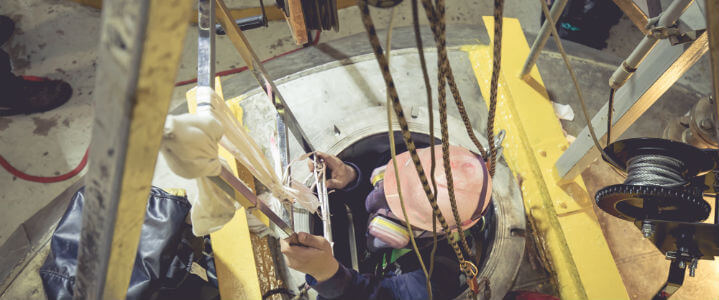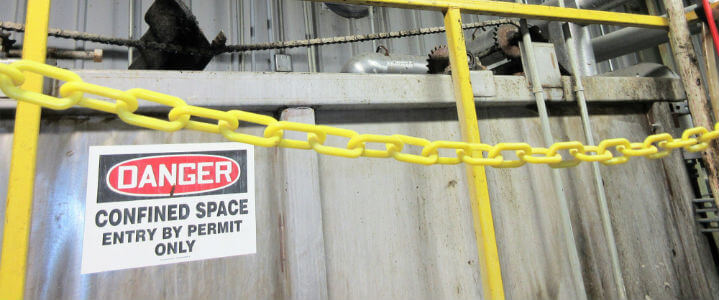It’s important to understand the OSHA confined space definition. This article covers what OSHA considers a confined space, and the general confined space do’s and don’ts. Get the outline and several essential details right here with us.
What Is Considered a Confined Space by OSHA?
OSHA confined space is defined as a space that is not necessarily designed for people. Other OSHA confined space criteria? These spaces are large enough for a worker or workers to enter, carrying out particular tasks.
The confined spaces also have limited or restricted access and exit points. Such spaces are certainly not meant for continuous occupancy and jobs.
Confined Space Examples
The list goes on, but here are a few examples of OSHA confined space:
- Pits
- Crawl spaces
- Tanks
- Vaults
- Equipment housing
- Storage bins
- Silos
- Manholes
- Sewers
- Attic spaces
- Stairways
What Is the Difference Between a Confined Space and Restricted Space?

You now know the OSHA confined space requirements. A “restricted” space is different. This is an area that is designed for people. Workers may enter and exit with ease. Continuous jobs may be performed there.
In restricted spaces, physical restrictions do exist. These can impact the work and workers in the area. There are different regulations in place for restricted spaces.
How Many Classes of Confined Spaces Are There?
There are two classes of confined spaces. You have non-permit confined spaces and permit required confined spaces. Non-permit confined spaces do not hold or possess the potential to hold any hazards that might cause death or serious physical harm to workers. Permit required confined spaces will be discussed below.
Keep reading to discover more. And use safety consulting services like those offered by our team at Safety by Design to ensure the best care and training for your employees.
OSHA Confined Space Regulations
Let’s look at some of the specifics on confined space requirements.
OSHA Permit Required Confined Space
This class of confined space poses a serious risk to the health of your workers. A permit required confined space will have at least one of these characteristics:
- Holds or possesses the potential to hold a hazardous atmosphere
- Holds a material that might engulf a worker who enters the space
- Possesses an internal configuration that might cause workers to become trapped or asphyxiated
- Holds any other observed or recognized hazards regarding health and safety
How Often Is Confined Space Training Required?
Before any work assignment even begins, workers must be trained. This includes any employee entering a permit required confined space. Sometimes job duties change, and you must provide additional training. You must also note if any new hazards present themselves or if a worker lacks understanding. Training is required in all these cases.
Your facility must keep excellent and thorough records of this training. Need help making sure this is happening? Using our safety training services can give you peace of mind with a proven system you can trust.
What Is Confined Space Entry?

OSHA confined space entry requires that confined spaces be identified first. You must then develop and assign entry permits. These control measures for working in confined spaces are important. The written permit should be posted beside all entrances to confined spaces.
Confined Space Awareness vs. Entry
You know about entry permits, but confined space safety goes beyond that. Awareness is also important. This is more about the training and education of those working in confined spaces. The individuals include entrants, attendants, and supervisors – those who can enter a confined space. Getting to know the space and even taking related awareness classes are essential.
Confined Space Safety Tips
- Before you even enter a space, look for the permit prior to entry. The area should not have harmful substances or materials within.
- A trained individual should run oxygen, hydrogen, and explosive gas tests. All these results should be recorded on the work permit.
- A ventilator should never be used to draw air outside. Your fan should always be safe and grounded. And when it comes to ventilation, the atmosphere needs to be tested as much as possible. Make proper ventilation a priority.
- Keep an eye on other workers. If workers are in a confined space, attendants should be in place to notify rescue teams in emergency situations.
- Bear in mind your PPE. A harness, a lifeline, a gas monitoring device, or a self-contained breathing apparatus may be needed.
Read the exhaustive OSHA confined space regulations for all the details.
At Safety by Design, we make it our mission to observe your facility, assess confined space safety, and so much more. Training, education, and support is what we’re all about. Contact us online today to learn about safety training or consulting for your operations!



